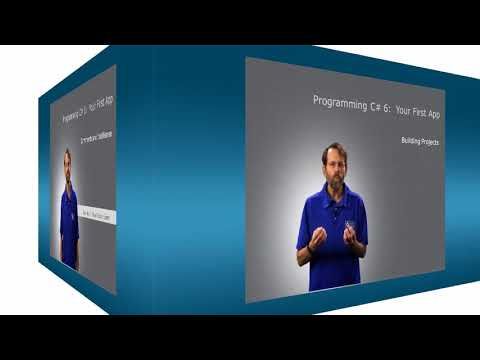
Django Cheat Sheet
Django is a free and open-sourced coding framework. It’s based on Python, which is great since it’s a common coding language. Many popular websites like Instagram, PBS, Disqus, The Washington Times, and others use Django. Thanks to its ease of use, it’s a common web framework used to design websites. It’s also fast to use, secure, scalable, versatile, and added with a ton of extras to help you create whatever you want. Our coding bootcamp goes into even more detail on how to use Django.
Install Django
It’s recommended to install Django in a virtual environment. This is so that your project is separate from your other Python projects. Most of the commands listed below assume you’re working in an active virtual environment. So, let’s begin:
Create a virtual environment
$ python –m venv v
Activate the environment (Linux and OS X)
$ source v/bin/activate
Activate the environment (Windows)
venv\Scripts\activate
Install Django to the active environment
(venv)$ pip install Django
Django: Create Project
Let’s create a new project, create a database, and start a development server.
Create a new project
django-admin.py startproject learning_log .
Create a database
python manage.py migrate
View the project.
After issuing this command, you can view the project at http://localhost:8000/.
python manage.py runserver
Create a new app
A Django project is made up of one or more apps.
python manage.py startapp learning_logs
Django: Template Inheritance Cheat Sheet
Most elements of a web page are repeated throughout a website, such as on every page of a site. This is similar to a header and footer in Word. A website usually has elements like a ‘Contact Us’ and their address and email on every page. Once you write a parent template for the site, you can change the appearance and maneuverability of your whole site.
The parent template
The parent template are the common elements to all the pages that defines blocks that are filled by individual pages.
<p>
<a href="{% url 'learning_logs:index' %}">
Learning Log
</a>
</p>
{% block content %}{% endblock content %}
The child template
The child template uses the {% extends %} template to pull in the structure of the parent template. It will then show the content for any blocks described in the parent template.
{% extends 'learning_logs/base.html' %}
{% block content %}
<p>
Learning Log helps you keep track
of your learning, for any topic you're
learning about.
</p>
{% endblock content %}
Install Django Rest Framework
Install the package via pip:
$ pip install djangorestframework
Then, add 'rest_framework' to INSTALLED_APPS in your settings.py file.
INSTALLED_APPS = [
# Rest of your installed apps ...
'rest_framework',
]
Django: Shell
Start a shell session
python manage.py shell
Access data from the project
from learning_logs.models import Topic
Topic.objects.all()
topic = Topic.objects.get(id=1)
topic.text 'Chess'
Django: Rest Framework Serialization
Serializers enable complicated data like querysets and model instances to be transformed to native Python datatypes that can then be rendered into JSON, XML, and other formats.
Using ModelSerializer class:
Let’s say we want to create a PostSerializer for the Post model example and CommentSerializer for our Comment model.
class PostSerializer(serializers.ModelSerializer):
class Meta:
model = Post
fields = ('id', 'title', 'text', 'created')
class CommentSerializer(serializers.ModelSerializer):
class Meta:
model = Comment
fields = ('post', 'user', 'text')
Or you can use exclude to exclude certain fields from being serialized. ModelSerializer has default implementations for the create() and update() methods.
Nested Serialization
By default, instances are serialized with primary keys to represent relationships. To get nested serialization we can use General or Explicit methods.
General
Using depth parameter.
class CommentSerializer(serializers.ModelSerializer):
class Meta:
model = Comment
fields = '__all__'
depth = 2
Explicit
Yuo can also define and nest serializers within eachother…
class CommentSerializer(serializers.ModelSerializer):
post = PostSerializer()
class Meta:
model = Comment
fields = '__all__'
So, the comment’s post field (how we named it in models.py) will serialize how we defined it in PostSerializer.
HyperlinkedModelSerializer
This makes your web API easier to use in a browser and is a great feature to add.
Suppose we wanted to see the comments that every post has in each of the Post instances of our API.
With HyperlinkedModelSerializer, instead of having nested primary keys or nested fields, we get a link to each Comment (URL).
class PostSerializer(serializers.HyperlinkedModelSerializer):
class Meta:
model = Post
fields = ('id', 'title', 'text', 'created', 'comments')
read_only_fields = ('comments',)
Another way of hyperlinking is through adding a HyperlinkedRelatedField definition to a serializer.
class PostSerializer(serializers.ModelSerializer):
comments = serializers.HyperlinkedRelatedField(many=True, view_name='comment-detail', read_only=True)
class Meta:
model = Post
fields = ('id', 'title', 'text', 'created', 'comments')
Dynamically Modifying Fields in the Serializer
This makes your web API easier to extract a limited number of parameters in the response. Suppose you want to set which fields should be used by a serializer at the point of initialization.
Just copy the below code and paste it in your serializer file:
class DynamicFieldsModelSerializer(serializers.ModelSerializer):
def __init__(self, *args, **kwargs):
# Don't pass the 'fields' arg up to the superclass
fields = kwargs.pop('fields', None)
# Instantiate the superclass normally
super(DynamicFieldsModelSerializer, self).__init__(*args, **kwargs)
if fields are not "None":
# Drop any fields that are not specified in the `fields` argument.
allowed = set(fields)
existing = set(self.fields.keys())
for field_name in existing - allowed:
self.fields.pop(field_name)
Extend DynamicFieldsModelSerializer from your serializer class
class UserSerializer(DynamicFieldsModelSerializer):
class Meta:
model = User
fields = ('id', 'username', 'email')
Mention the fields name inside fields
UserSerializer(user, fields=('id', 'email'))
Here, you will get only id and email from the serializer instead of all.

Learn Python Django From Scratch
On DemandLearn Django from beginner through to fully functional levels
Get StartedDjangoL Passing Data into Viet Cheat Sheet
Most pages in a project need to present data that are specific to the current user.
URL Parameters
A URL usually needs to accept a parameter that lets it know which data to access from the database. The second URL pattern shown as follows looks for the ID of a specific topic and stores it in the parameter topic_id.
urlpatterns = [
url(r'^$', views.index, name='index'),
url(r'^topics/(?P<topic_id>\d+)/$',
views.topic, name='topic'),
]
Using Data in a View
The view uses a parameter from the URL to pull the correct data from the database. In this example, the view is sending a context dictionary to the template, containing data that should be displayed on the page.
def topic(request, topic_id):
"""Show a topic and all its entries."""
topic = Topics.objects.get(id=topic_id)
entries = topic.entry_set.order_by('-date_added')
context = {
'topic': topic,
'entries': entries,
}
return render(request, 'learning_logs/topic.html', context)
Using Data in a Template
The data in the view function’s context dictionary is found within the template. This data is used through the help of template variables, which are indicated by doubled curly braces. The vertical line after a template variable specifies a filter. In the example, a filter called date formats date objects, and the filter linebreaks renders paragraphs on a web page.
{% extends 'learning_logs/base.html' %}
{% block content %}
<p>Topic: { topic }</p>
<p>Entries:</p>
<ul>
{% for entry in entries %}
<li>
<p>{ entry.date_added|date:'M d, Y H:i' }</p>
<p>{ entry.text|linebreaks }</p>
</li>
{% empty %}
<li>There are no entries yet.</li>
{% endfor %}
</ul>
{% endblock content %}
Django: Rest Framework Views Cheat Sheet
There are various options for creating views for your web API, so it really depends on what you want and your personal preference.
Using Function-based views:
from rest_framework.decorators import api_view
from rest_framework.response import Response
from rest_framework.parsers import JSONParser
from rest_framework import status
from posts.models import Post
from posts.serializers import PostSerializer
@api_view(['GET', 'POST'])
def post_list(request, format=None):
if request.method == 'GET':
posts = Post.objects.all()
serializer = PostSerializer(posts, many=True)
return Response(serializer.data)
elif request.method == 'POST':
data = JSONParser().parse(request)
serializer = PostSerializer(data=data)
if serializer.is_valid():
serializer.save()
return Response(serializer.data, status=status.HTTP_201_CREATED)
return Response(serializer.errors, status=status.HTTP_400_BAD_REQUEST)
Using Class-based views:
from rest_framework.response import Response
from rest_framework import status
from rest_framework.views import APIView
from posts.models import Post
from posts.serializers import PostSerializer
class PostList(APIView):
def get(self, request, format=None):
snippets = Post.objects.all()
serializer = PostSerializer(snippets, many=True)
return Response(serializer.data)
def post(self, request, format=None):
serializer = PostSerializer(data=request.data)
if serializer.is_valid():
serializer.save()
return Response(serializer.data, status=status.HTTP_201_CREATED)
return Response(serializer.errors, status=status.HTTP_400_BAD_REQUEST)
Using Generic Class-based views:
from rest_framework import generics
from posts.models import Post
from posts.serializers import PostSerializer
class PostList(generics.ListCreateAPIView):
queryset = Post.objects.all()
serializer_class = PostSerializer
Using Mixins:
from rest_framework import generics, mixins
from posts.models import Post
from posts.serializers import PostSerializer
class PostList(generics.GenericAPIView,
mixins.ListModelMixin,
mixins.CreateModelMixin
):
queryset = Post.objects.all()
serializer_class = PostSerializer
def get(self, request, *args, **kwargs):
return self.list(request, *args, **kwargs)
def post(self, request, *args, **kwargs):
return self.create(request, *args, **kwargs)
Using ViewSets:
With ModelViewSet, you don’t have to design separate views for getting a list of objects and detail of one object. ViewSet will deal with it for you in a dependable way for both methods.
from rest_framework import viewsets
from posts.models import Post
from posts.serializers import PostSerializer
class PostViewSet(viewsets.ModelViewSet):
"""
A viewset for viewing and editing post instances.
"""
queryset = Post.objects.all()
serializer_class = PostSerializer
Routers
Routers in ViewSets allow the URL configuration for your API to be automatically generated using naming standards.
from rest_framework.routers import DefaultRouter
from posts.views import PostViewSet
router = DefaultRouter()
router.register(r'users', UserViewSet)
urlpatterns = router.urls
Custom Actions in ViewSets
DRF delivers helpers to add custom actions for ad-hoc behaviors with the @action decorator. The router will configure its URL consequently. For example, we can add a comments action in our PostViewSet to retrieve all the comments of a specific post as follows:
from rest_framework import viewsets
from rest_framework.decorators import action
from posts.models import Post
from posts.serializers import PostSerializer, CommentSerializer
class PostViewSet(viewsets.ModelViewSet):
...
@action(methods=['get'], detail=True)
def comments(self, request, pk=None):
try:
post = Post.objects.get(id=pk)
except Post.DoesNotExist:
return Response({"error": "Post not found."},
status=status.HTTP_400_BAD_REQUEST)
comments = post.comments.all()
return Response(CommentSerializer(comments, many=True))
Upon registering the view as router.register(r'posts', PostViewSet), this action will then be available at the URL posts/{pk}/comments/.
Django: Building a Page
Users interact with a project through web pages, and a project’s home page can basically be a page without any sort of data. A page usually needs a URL, a view, and a template.
Mapping a project’s URLs
The project’s main urls.py file tells Django where to find the urls.py files related to each app in the project.
from django.conf.urls import include, url
from django.contrib import admin
urlpatterns = [
url(r'^admin/', include(admin.site.urls)),
url(r'', include('learning_logs.urls', namespace='learning_logs')),
]
Mapping an App’s URLs
An app’s urls.py file tells Django which view to use for each URL in the app. You got to make this file yourself and save it in the app’s folder.
from django.conf.urls import url from .import views
urlpatterns = [
url(r'^$', views.index, name='index'),
]
Writing a Simple View
A view takes information from a request and sends data to the browser, usually through a template. View functions are stored in an app’s views.py file. This basic view function doesn’t pull any data, but it uses the template index.html to render the home page. from django.shortcuts import render
def index(request):
"""The home page for Learning Log."""
return render(request, 'learning_logs/index.html')
Writing a Simple Template
A template creates the structure for a page. It’s a mix of HTML and template code, which is similar to Python but not as powerful. Make a folder called templates inside the project folder. Inside the templates folder, make another folder with the same name as the app. This is where the template files should be saved.
<p>Learning Log</p>
<p>Learning Log helps you keep track of your
learning, for any topic you're learning
about.</p>
Working with Django Models
Defining a Model
To define the models for your app, modify the file models.py that was created in your app’s folder. The str() method communicates with Django on how to represent data objects based on this model.
from django.db import models
"""A topic the user is learning about."""
class Topic(models.Model):
text = models.CharField(max_length=200)
date_added = models.DateTimeField(
auto_now_add=True)
def str(self):
return self.text
Defining a Model with a Foreign Key
class Entry(models.Model):
"""Learning log entries for a topic."""
topic = models.ForeignKey(Topic)
text = models.TextField()
date_added = models.DateTimeField(
auto_now_add=True)
def str(self):
return self.text[:50] + "…"
Activating a Model
To use a model, the app must be added to the tuple INSTALLED_APPS, which is stored in the project’s settings.py file
INSTALLED_APPS = (
--snip--
'django.contrib.staticfiles',
# My apps
'learning_logs',
)
Migrating the Database
The database needs to be changed to store the type of data that the model represents.
python manage.py makemigrations learning_logs
python manage.py migrate
Creating a Superuser
A superuser is a user account that has access to all aspects of the project.
python manage.py createsuperuser
Registering a Model
You can register your models with Django’s admin site, which makes it easier to work with the data in your project. To do this, modify the app’s admin.py file.
from django.contrib import admin
from learning_logs.models import Topic
admin.site.register(Topic)
Many popular websites like Instagram, PBS, Disqus, The Washington Times, and others use Django. Thanks to its ease of use, it’s a common web framework used to design websites. Our coding bootcamp goes into even more detail on how to use Django.



